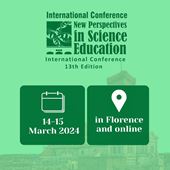Telegram Bots in Science Education: Applications in the Context of Astrophysics
Maura Sandri, INAF OAS Bologna (Italy)
Alessandro Bogliolo, University of Urbino (Italy)
Lorenz Cuno Klopfenstein, University of Urbino (Italy)
Claudia Mignone, INAF Sede Centrale (Italy)
Silvia Galleti, INAF OAS Bologna (Italy)
Chiara Badia, INAF Osservatorio Astronomico d’Abruzzo (Italy)
Rino Bandiera, Inaf Osservatorio Astronomico di Arcetri, Italy (Italy)
Laura Daricello, INAF Osservatorio Astronomico di Palermo (Italy)
Maria Teresa Fulco, INAF Osservatorio Astronomico di Capodimonte (Italy)
Giuliana Giobbi, INAF Sede Centrale (Italy)
Laura Leonardi, INAF Osservatorio Astronomico di Palermo (Italy)
Marco Malaspina, INAF OAS Bologna (Israel)
Daniela Paoletti, INAF OAS Bologna (Italy)
Ginevra Trinchieri, INAF Osservatorio Astronomico di Brera (Italy)
Abstract
Digital tools have transformed how we create and share educational content, particularly in science. This change has opened up exciting opportunities for both educators and learners, making complex concepts more accessible and engaging than ever before. Among these tools, Telegram bots stand out for their versatility, accessibility, and ability to foster interactive user engagement [1]. This contribution focuses on the innovative use of Telegram bots in developing scientific education resources, highlighting some case studies in Astrophysics, such as the Astrophysical Cody Maze and the Astrophysical Code Hunting Game [2].
The Astrophysical Cody Maze is a virtual labyrinth that presents coding challenges and quizzes related to astrophysics and space exploration. It helps participants develop computational thinking and problem-solving skills while promoting scientific dissemination. The International Code Hunting Game is a virtual treasure hunt that guides participants through a map of the world, discovering astronomical observatories, from the largest and most famous to smaller, lesser-known ones, including currently operating and heritage facilities, alongside iconic locations and notable figures in the history of astrophysics.
Furthermore, this contribution demonstrates how a bot can be created and programmed using Python and how some functionalities can be incorporated into educational resources. As such, it highlights the value of Telegram bots in science education, encouraging educators and developers to explore similar approaches in every field of study. The adaptability of this platform offers endless possibilities for creating engaging, scalable, and impactful educational resources, as well as allowing the collection of valuable data for evaluation purposes.
Keywords: Telegram bots, gamification, astrophysics, coding, STEM
References:
[1] The Rise of Bots: A Survey of Conversational Interfaces, Patterns, and Paradigms, L.C. Klopfenstein, et al., Proceedings of the 2017 Conference on Designing Interactive Systems (2017)
[2] The International Astrophysical Online Code Hunting Game and the Astrophysical Cody Maze, M. Sandri et al., Mem. S.A.It. Vol. 94, 128 (2020)
 New Perspectives in Science Education
New Perspectives in Science Education





























